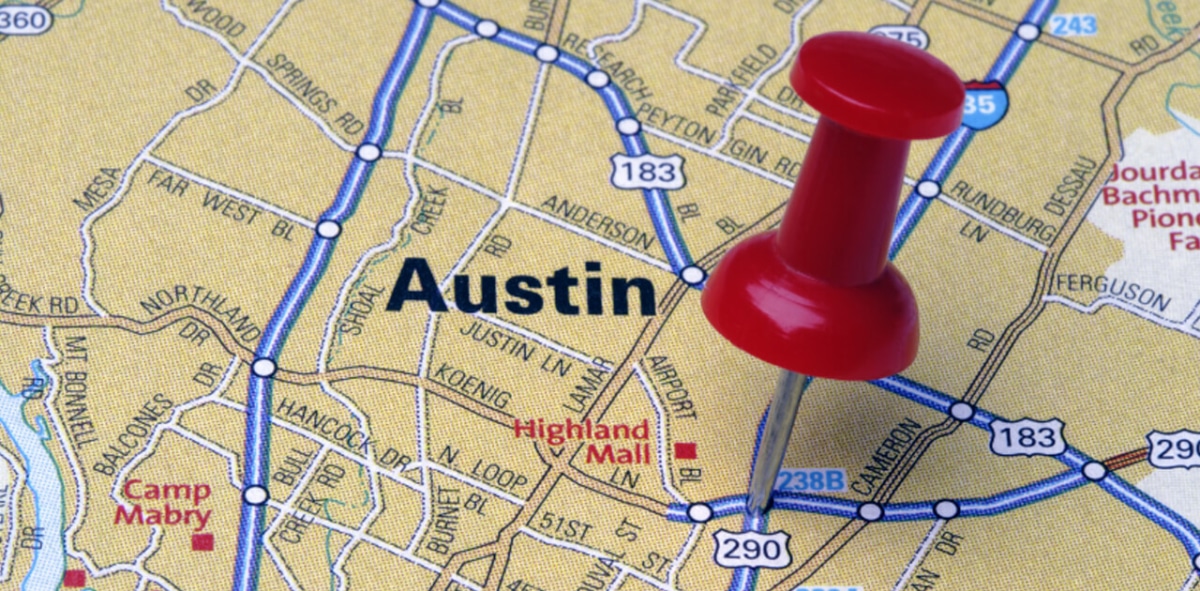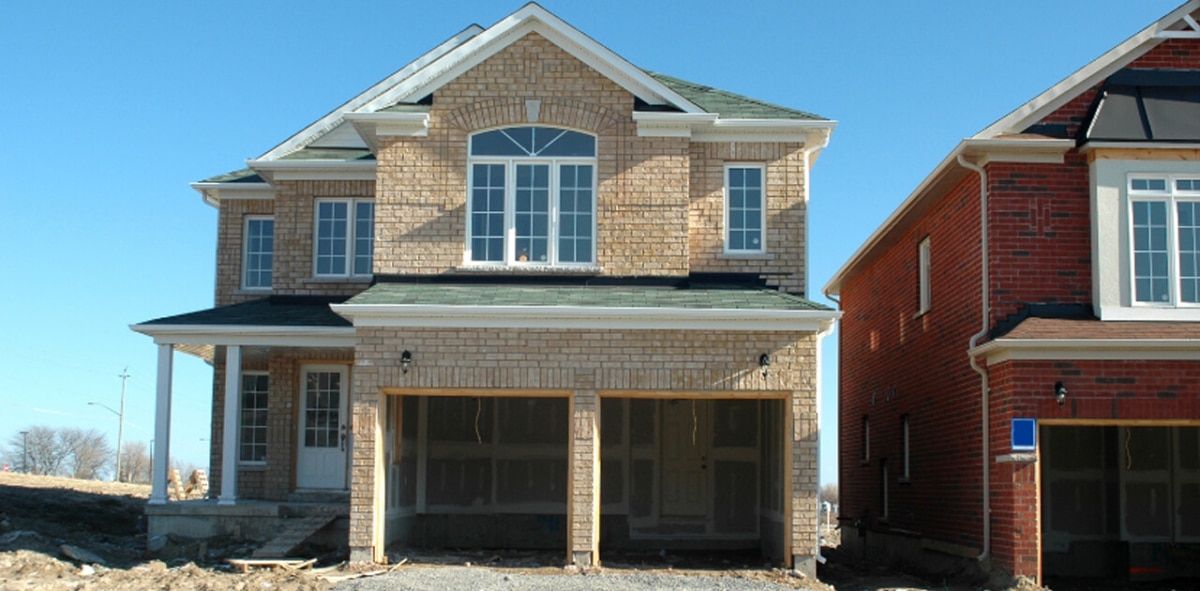How to Buy a House in Austin Texas | It’s Unbelievable!
So every day, tens of people are moving to Austin, Texas, and it is super exciting, but the market is so hot that it’s getting a lot of people bummed and really disappointed at the whole buying process here.
So today, I want to pull back the curtain and show you what buying a home in Austin is like. Right now. I have this conversation with people a lot. I decided to put it out there so everyone knows what buying a home in Austin is like.
While there might be times that I might sound like I’m exaggerating or trying to scare everyone away because I don’t want you to move here. That is absolutely not the case. Everything that I’m gonna share with you today, I have experienced personally with my clients trying to put in bids to buy a home in Austin.
Hi, I’m Tiffany Moore. I’m a realtor right here in Austin, Texas. Contact me if you’re looking to buy a house in Austin, Texas.
I talk to many people moving out here from all over the country. And they’re somewhat familiar with how the Austin market is right now. It’s crazy, but they don’t know the nitty gritty.
So today, I will set some expectations on what you can expect when buying a home in Austin. And this is gonna sound very alarmist. It’s gonna sound exaggerated or hyperbole. I promise you that these are all instances I have experienced while helping my clients buy a home in Austin.
So, I’m just trying to be straight with you and tell you what buying a home is like. First, you need to know that the market is hot. If you didn’t know that already, now you know.
So when COVID hit, the market exploded. Around April or May, people figured out they didn’t have to live downtown or they didn’t have to live close to their offices anymore.
They’re free to live wherever they want in Austin. Also, people were spending so much time in their homes, and they could not take it anymore. They needed somewhere else to live, whether it was more space or less space to clean, whatever it was; people were just tired of living where they were. And the interest rates fell significantly to try and boost the economy.
So, these three factors contributed to Austin’s real estate market exploding in 2020. And then, just since January of 2021, like January 1st, it exploded even worse.
Whereas in September and October of 2020, we saw multiple offers on houses, maybe 10 to 15 offers per house, in January 2021, we saw 40 offers, 50 offers, and 60 offers for homes.
So that is what’s going on in the market right now. That’s why it’s difficult for buyers. It has been a seller’s market in Austin for several years.
Now, it is like a seller’s market on steroids. So these are some of the things we’re seeing in the market now. I want you to know what they are so that when you see them coming, you’re like, oh yeah, I knew this was happening. You don’t have to like it. You have to accept that this is the reality post-COVID.
So, let’s talk about open houses. Not every listing agent has open houses for the homes they’re selling. One is because of COVID-19. They’re trying to reduce the number of people in and out of a home. Two, because they really don’t have to. Like I just said, it’s a seller’s market.
So whether they put the house as an open house for the weekend, they’ll still get multiple offers, and people will still buy it. They no longer have to generate interest in the home.
If there is an open house for the home, expect to wait outside for a while for it to be your turn to get in, primarily because of COVID-19 because we’re trying to reduce the number of people in the home.
At one time, they’ll usually let about one group in at a time. They’ll spend about five or 10 minutes in and then rotate to another group. So you may pull up to an open house and see 10 or 15 groups of people waiting in line to get in the open house. This is a possibility.
Another reason there are so many lines for people to get in is just the craziness of the market and how busy it is. So, the second thing to expect in Austin is multiple offers. If you find a house that you like, many other people will also want that house, and they will put in offers on it.
So it used to be, you know, four or five years ago that you’d see a house that you like. You put an offer maybe a little bit below what they’re asking for. You negotiate with the seller, and you come to an agreement. That is no longer how you buy a house in Austin.
So last year, and even the year before, we saw multiple offers on houses, but it was more like, okay, maybe three or four offers and then 10 or 12, maybe 15 offers. I’m serious. Just in January of this year, we’re seeing 40, 50, 60, 90 offers on homes.
So, with that being said, you need to treat your offer like a silent auction. You only get one shot. You only get one shot to put your highest bid at the highest price and your best offer, meaning the best terms you can put forward for the seller that meets your needs. So, if you can’t pay cash for a house, that doesn’t need to be part of your offer.
So, we talked about how Austin is a crazy seller’s market. Listing agents are not necessarily holding open houses because they don’t have to. Homes are just generating multiple offers.
I’m not even talking about beautiful houses. A lot of these houses are investment opportunities. They may be in the 275 up to 450 range. They may need kitchen renovation, bathroom flooring, and stuff like that.
So you’re not even talking about turnkey houses. We’re talking about homes that you will need to put a lot of cash into and then put a lot of money into once you get it to make it the way you want.
When you find the house you want to make an offer on, it will only be on the market for about three to four days before an offer deadline.
So most agents are going to expect multiple offers, and they’re going to set an offer deadline, and they usually keep the house open for a weekend. So they’ll put it on the market Wednesday or Thursday, leave it on the market through Sunday or Monday, and offers usually do Sunday or Monday.
The seller will decide that day or the next, and then the listing agent will tell everyone, “Hey, you either did or didn’t get the offer.”
So, with that being said, when you find a house that you really like, you’ve got to go see it that day or the next day, figure out if you wanna put an offer in, strategize with your agent about how much, what the terms are, all that good stuff and get it in as soon as possible, or at least before the offer deadline.
Just a couple weeks ago, I was helping a client put in an offer. The listing agent had in the listing information that the offer deadline was Sunday at noon. So we were getting our information together. We were about to put in the offer, and I double-checked the listing again. Suddenly, the house was already pending with another buyer, and we hadn’t even reached the date or time for the offer deadline.
So, FYI, the offer deadline is a good guideline, but it is not the be-all-end-all. You wanna get that offer in as soon as you can. And if your offer is good enough and you’re one of the first or second ones to put it in, the listing agent might accept it.
The seller might realize, okay, this is what we want. We don’t wanna go through all the rigamarole of looking at all the offers and comparing everything. We like this one. And we want to get it over with.
So definitely try and get your offer in as soon as possible, but before the advertised offer deadline, and if you find a house that you like that’s been sitting on the market for two to three weeks. There’s probably a reason for that.
There are no deals. There are no diamonds in the rough. There are no gems that have yet to be discovered. Those don’t exist in this market anymore. So go in with open eyes. If you see a house that looks perfect but has been on the market for two or three weeks. There’s probably a reason why.
So here is a quick tip. When dealing with a multiple offers scenario, determine what’s most important to the seller. Sometimes, they need to lease the house back from you. Once you buy it.
They’re often building their own house, and it won’t be ready for a few months. Sometimes, they need a week to move and get all their stuff out of the house. Is it a quick close that they’re looking for? Are they looking for favorable terms? Contact their listing agent and find out what’s important to them and what will help you make the sweetest possible offer for the seller.
So we just talked about asking to find out the essential things the seller’s looking for for their offer. If one of them is a quick close, you will need to use a local lender. That’s the third thing you need to do when trying to buy a house in Austin.
Your agent probably has one or two local lenders that they work with a lot. That’s because the agent can get a hold of the lender. These negotiations often go on Friday night at nine o’clock, Saturday night at seven o’clock, or Sunday morning at 10:00 AM.
And I promise you from my personal experience and my agent friend’s personal experience, Bank of America, Wells Fargo, and Chase are not going to answer your calls, your texts, or your emails at those times, even though you desperately need to get the paperwork together, to get an answer, to find some information, to make sure this offer goes through.
So, that’s one of the biggest reasons you need to use a local lender. One is just the communication factor. Two, these local lenders are part of the Austin real estate community. We know each other personally. We know them face to face.
I have the personal text and email addresses of everyone I work with. Think of these people like a small business versus a big corporation. They have a reputation in the community. They’re generating their own business.
They’re not just relying on a big name like Bank of America. And they know that if they deliver for you or your agent, you will refer them to your friends and partners for future deals. Another reason you want to use a local lender is that they usually have access to better appraisal pools.
So we’re gonna talk about appraisal issues later on, but keep in mind that a local lender will be able to access better appraisal pools. So, it’s more likely that the home will appraise at or closer to the sales price.
Here’s the fourth thing you need to know about buying a home in Austin: it hurts and sucks. And I hate it, but it is reality, so we must accept it and move on. You will lose out on a handful of houses before our offer sticks.
Before we make an offer on a home that’s accepted. And by a handful of houses, I mean maybe five to 10. So we may put in 10 bids before getting one taken by the seller.
That’s just the way the market is right now. Unless you are coming in paying cash 100%. You don’t care what the house appraises for. You can settle in two weeks, meaning you can close in two weeks, and if you want to pay way, way above the listing price, you may get your offer accepted on the first shot. I hope so. Good for you. That would be amazing.
Unfortunately, there are not a lot of buyers that have that power right now. And even if they do, someone may come in on top of your super offer and offer another $10,000 and, you know, give away their dog and the deal, too. You, you never know.
Whenever I think I’ve put in a super competitive offer, like there’s no way anyone could top it, they blow you out of the water with either the price, terms, or conditions. There is something crazy in the offer that your buyer cannot compete with.
So, expect to lose out on a handful of homes. And it’s tough because when you find a home that you love, you have an emotional connection with it. You love it. You can see yourself living there. It’s awesome. And then you put in your offer, you get super excited, and we don’t get it.
Then we put another one in and don’t get it. This happens a lot, but we just got to develop thick skin. We got to pick ourselves up, move on, find the next house, and put in the next offer. We’re going to get one eventually. You’ve got to know ahead of time that we will probably not get the first one.
The fifth thing you need to know about buying a home in Austin right now is that you’ll pay way more than you think you need to pay for this home. Recently, I was talking to a friend, and she said, you know, it’s almost like you need to be embarrassed about the amount of money you’re offering for this home to even get your offer accepted.
I thought that’s accurate because I hate telling my clients I know that this house was listed at 310, but we will have to offer 400 to make a competitive offer. I hate that.
And it sounds absurd. I know how ridiculous it sounds. It sounds crazy. And it takes a few failed offers for people to believe me and start making competitive bids for houses because it’s hard to believe and accept.
But the sooner you can accept that, the better. As I said, you don’t have to like it but must accept it. So, expect to pay above the listing price. I consider the listing price irrelevant because it will sell for way more than that.
Many realtors set the listing price low to drive up competition and generate multiple house offers. I don’t really care what the listing price is. Instead, I look at the recently sold homes in the neighborhood. What they sold for overall. What’s the total cost? What was the price per square foot? What’s the condition of that home versus the one you will buy. And then we add a bunch of money on top of that.
The market is moving and changing weekly. So, whatever homes have sold in the past 30 days is a good indication of what a reasonable offer will be on the house you want to buy today.
But in those few weeks, the market has already grown. So, every house that we put an offer on is a new game. There are no trends. It’s just this one house.
So, I’m trying to say the listing price is a good indicator of the ballpark you should be in. But you should plan to spend a lot more money if you want to put in a competitive price for your house.
What I like to tell my clients is, at the end of the day, how much do you want to pay for this house? Forget about how much it’s worth. Forget about the appraisal if we can. We’ll talk about that in a minute. At the end of the day, how much do you want to spend on this house? And then maybe add a big stack of money on top of that.
That’s gonna give you a competitive offer. So now we’re gonna talk about appraisals. This is the sixth thing you must know when buying a house in Austin.
So we just talked about how you’ll have to offer a lot more money on top of the listing price to get the bid because there are multiple offers. The seller’s going to pick the sweetest deal. You want that to be yours.
A lot of times, that means coming in at a really high price. So the risk with that is unless you’re paying all cash or a big chunk of money, like unless you’re putting 50% or more down on the house, the appraisal will be a significant factor in your buying power.
So what that means is, let’s say you are even putting down 20% on a home, and your bank says, cool, I will lend you 80% of the value of this home. And you say, cool. I found this house for 300. I offered 400, and I got the bid. Awesome. And now your bank will say, okay, we’re gonna appraise it, and we’re going to see if it’s worth what you want to pay for because we’re only gonna offer you 80% of what it is worth.
So the bank comes out, and they appraise it at 400. If they do fantastic, everyone wins. It’s great. If not, let’s say they appraise it for 385, then they’ll give you 80% of 385, and you’ve to make up for that difference between the 385 and the 400 at the closing table in cash.
So the sellers know this. They know that, “Great, you can offer whatever you want. Maybe you’re pre-approved for like $500,000, and you’re only offering 400.” But their question really is that if the bank doesn’t appraise it. Are you still going to come to the table and buy this house?
Because at the end of the day, one of the biggest things for sellers is time. They want to be done with this house and get your money in their pocket as soon as possible. So if they go through this process and we get to the appraisal, which usually happens a week or two before you close, and suddenly you back out because the appraisal is too low, they will not be thrilled.
They would much rather go with someone who either doesn’t really care what the appraisal is or is willing to bring extra cash to the table to make up for that appraisal gap.
There’s a form in Texas where you can waive your right to back out of the contract if the appraisal is low. You’re saying that no matter what the appraisal comes back at, you’ll still come to the table, and I’ll make up the difference.
That is for people who are putting down a lot of money for the home, or they have a lot of cash reserves where maybe they’re only putting down five or 10%, but they could put down a lot more if they need to.
So, a second part of that form says I will come to the table and make up the difference if the appraisal comes back low, as long as it’s at X or above.
So in the example we just talked about, you buy the house for 400, you could easily say, you know, I will still come to the table and bring the extra cash as long as the appraisal comes back at 375 or above, meaning you’d have to bring that additional 25 to the table if the appraisal is low.
Without this form, you have no chance of having your offer accepted. This form is one of the most significant selling points to the sellers because they know their listing agents know there’s a possibility the house may not appraise and that you have a right to back out if that happens. So this form waives that right.
You’re essentially saying, “Hey, don’t worry, seller. I will still come to the table even if the appraisal is low. Without this form, you don’t have a shot at winning a house.
So, we talked about the importance of using local lenders and how they have access to better appraisal pools. This is the big reason why: better appraisal pools.
They know what the market is doing. They’re familiar with what’s been happening in Austin. They know what it takes to get the house to appraise, and they can compare other homes appropriately versus someone who lives in Kentucky and doesn’t know what’s going on in the market. They’re just looking at pictures in the MLS and deciding from there.
Local appraisers of the local pools are here, and they are local. And so their appraisals are going to be better. This means you probably don’t have to come out of pocket as much and have a better chance of getting the house you want.
The seventh thing to think about when buying a house in Austin right now is that you may not be able to live in the neighborhood you want. You may have this dream of living, you know, in south Austin and walking everywhere and going to the coffee shops and the breweries and the restaurants and riding your bike to the trail and having an incredible life.
That sounds awesome. But the market is moving so fast that that may not be a reality for your budget. Something to be aware of is that many people want to live in the cool areas of Austin, and by cool, I mean the stuff you see on TV, in the movies, in the magazines, all that stuff on why Austin is hot right now. If your budget doesn’t allow that, we have to accept that and find you a house in another Austin neighborhood you can afford.
The rule of thumb is the further you get from the city. The more affordable houses are per square foot. So that may be something to consider: how far away from the city are you comfortable with, and what will your budget allow?
At the end of the day, you really have to be honest with yourself about what is important to you and what your budget is. So, if good schools are essential to you, there are better places to live than living in Austin.
Anyway, the excellent schools are in the Lakeway-Bee Cave area on the west side of town. The more excellent homes are where the good schools will be, and also in the new construction neighborhoods, more to the north, like Round Rock, Cedar Park, Leander, Georgetown, and Liberty Hill. Those are where the excellent school districts are as well. They are further removed from the city.
So I talk to a lot of families who are moving out here. They really want a good school district, but they also want to be in the cool Austin areas where they can walk to the coffee shops, restaurants, etc. And I have to be straight with them and let them know we can do one or the other.
They have to choose whether they want excellent schools or an area where you can walk and do all the fun, cool, Austin-ey stuff.
The eighth thing to know about buying a house in Austin right now is the popularity of the price ranges. Right now, the price ranges of 350 to 500 are number one. That’s the sweet spot where everyone is looking to buy right now. It’s also where many investors want to buy, especially in that 350 to 450 range.
One, because that’s the most popular, that’s where the most competition will be just volume-wise. More people are going to be competing with you for those homes. Also, when talking about investors buying those homes, they usually come in with a lot of cash.
They usually don’t care what the appraisal is. As I mentioned before, because they’re coming in with a lot of cash, they’re okay with houses that need updating and upgrading.
They don’t really care what neighborhood it’s in. They’re not as picky as you because they’re not attached to a community. They’re not tied to a school zone.
That means they can put in a bunch of different offers in different neighborhoods and compete with you for every other one that you’re trying to put an offer in.
So, FYI, that is the most popular price range and the most competitive, but it’s also the most competitive because of the other buyers in that price range, which are the investors that have a lot of cash.
So here is a quick tip. If you’re looking at this price range and even some of the higher ones, there are companies out there that will basically give you a mortgage behind the scenes so that you can pay cash for a home.
So they’ll lend you the money. So you can make a cash offer for your house. Cash is king wherever you’re at. It’s especially true when you’re buying a home because, one, cash is for sure.
I have cash in my hand. I don’t need to wait for a bank to approve me for a loan and do their appraisal and all that stuff. I have the cash in my hand right now. I can give it to you. We can close in two weeks. Done deal.
That is preferable for a seller because sellers are worried about the timing, as we discussed. They want to ensure it’s done, and they can move on with their life and put your money in their pocket.
I know a few of these companies. If you’ve heard of them, check them out. See if that’s something that would work for you. If you can only put down five or 10% right now, it will be tough to make a competitive offer and buy a house because of the cash-is-king rule and the appraisal issue we discussed a few minutes ago.
So what happens is folks I work with putting down five or 10%. I’ll ask them how much cash you have to put in for your down payment, closing costs, and if the appraisal returns low.
Then, we strategize from there on each house. Okay, for this one, let’s put down X amount of cash and reserve this much in case the appraisal comes back low. And that will only make you out of pocket, you know, 50 grand in a worst-case scenario.
So, every house we’re strategizing with is based on how much cash you have to buy the house. So, obviously, the more money you have on hand, the more competitive your offer can be. And the more likely it is that you will be able to get a house sooner rather than later.
If you put down 400 cash, that would solve many of those problems. Not everyone can do that. Obviously, that’s not really reality.
But if you find one of these companies that will give you, you know, a mortgage behind the scenes and give you the cash, you can make a cash offer. That would be a terrific choice, than if you were only going to put down five or 10%.
So the second most popular price range is 250 to 350. That price range is going out the window. You really can’t get anything worthwhile in Austin below 250. I want to say closer to 400 now.
So the houses you’ll get, around 340, 350, will need some work. So, again, it goes back to the issue of cash. How much money do you have on hand?
If you buy the house, it’s livable. There’s nothing wrong with it. It’s livable. It’s just outdated. The carpet’s probably old, the kitchen needs to be updated, and so does the bathroom.
You can do that over time, but that takes cash or a home renovation loan. But if you just moved into the house, you won’t be eligible for a home equity loan, especially if your appraisal came back lower than the asking price.
So, just something to think about closer to 375, 400 is going to be the sweet spot for a home you can move into that doesn’t need a lot of renovations right now.
And the third, most popular price range right now is 500 to 700. There is less competition in this price range because it’s more expensive. Obviously, more people can afford a lower
price range. The higher the price range gets, the fewer people can afford it.
So that’s just one reason why it’s less popular, but the same issues are also happening in this price range. We’re still getting multiple offers. Houses are still going for 10 to 15% above asking price.
It’s just that instead of 50 offers, maybe there’s 20. So, does that make a difference? It’s still a crazy seller’s market, but like I said, the more expensive you get and the higher the price range, the less competition you will have.
So now I want to switch gears and talk about new construction. I like new construction for that super popular price range of 350 to 500 because it allows us to avoid this rat race of bidding on 40-50 other offers for this house, paying way above the asking price and having a lot of cash on hand. New construction solves a lot of those
problems if your timeline is flexible.
So you don’t need a substantial down payment for new construction. New construction is an excellent option if you want to buy it later this year.
The only thing is new construction doesn’t really allow for investors. So, with most new construction neighborhoods, the house you buy must be your primary or secondary home. It can’t be an investment property.
I love new construction in the 350 to 500 price range because, like I said, you get out of that rat race. Plus, you’re buying a new home that you know doesn’t need a new roof, HVAC, or water heater in the next three to five years and already comes with an excellent home warranty.
You’re also in a brand new, beautiful neighborhood that usually has some outstanding schools and some cool shops and restaurants that will be opening around it soon.
Now, new construction usually comes with a higher tax rate. So 2.7 to 3%, maybe higher than 3%. That’s to pay for a lot of the infrastructure with the new construction. A lot of the new schools. All that good stuff.
The tax rate will decrease over the years as more people populate the neighborhoods, but over a few years, I mean like seven to 10 years, as they fill out the community.
So those are the pros and cons of that price range. I have been guiding many people towards new construction if their timeline is flexible. If it’s not flexible and they have to get to Austin immediately, then we’ve got to start making really competitive offers on those resale homes. Way above the asking price and deal with the appraisal issues and all that good stuff. Contact me if you’re looking to buy a house in Austin, Texas.












